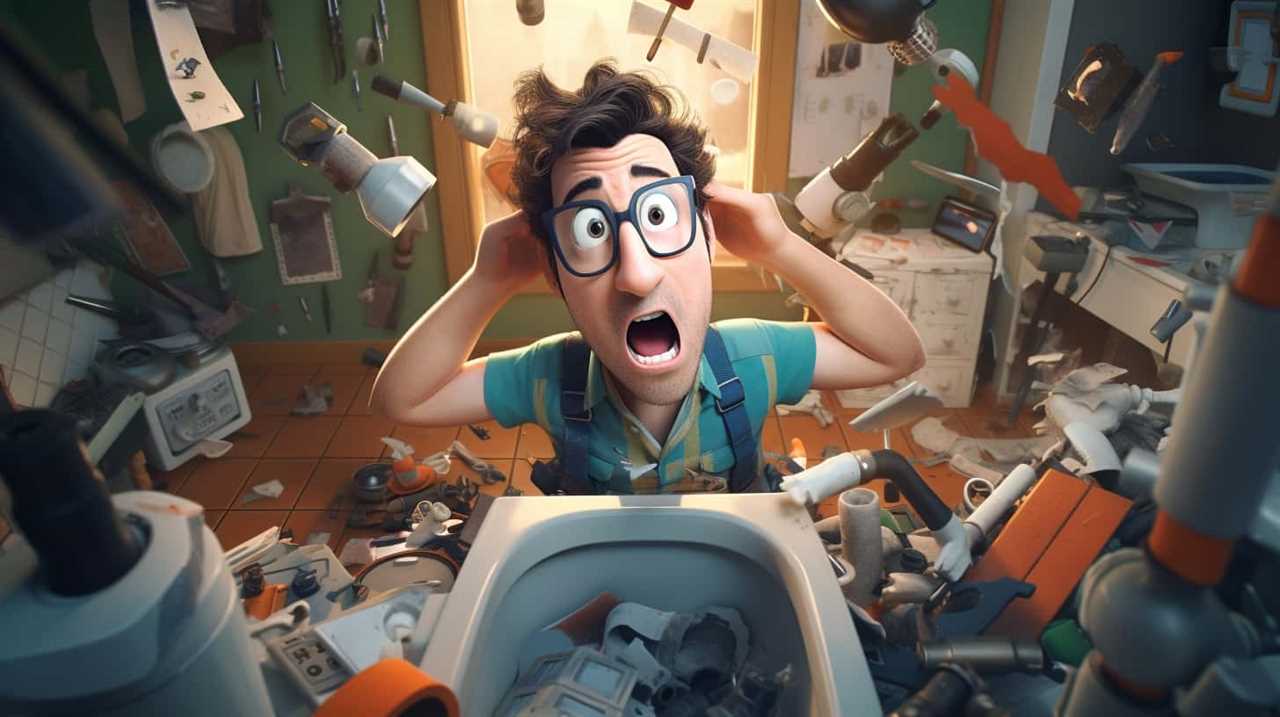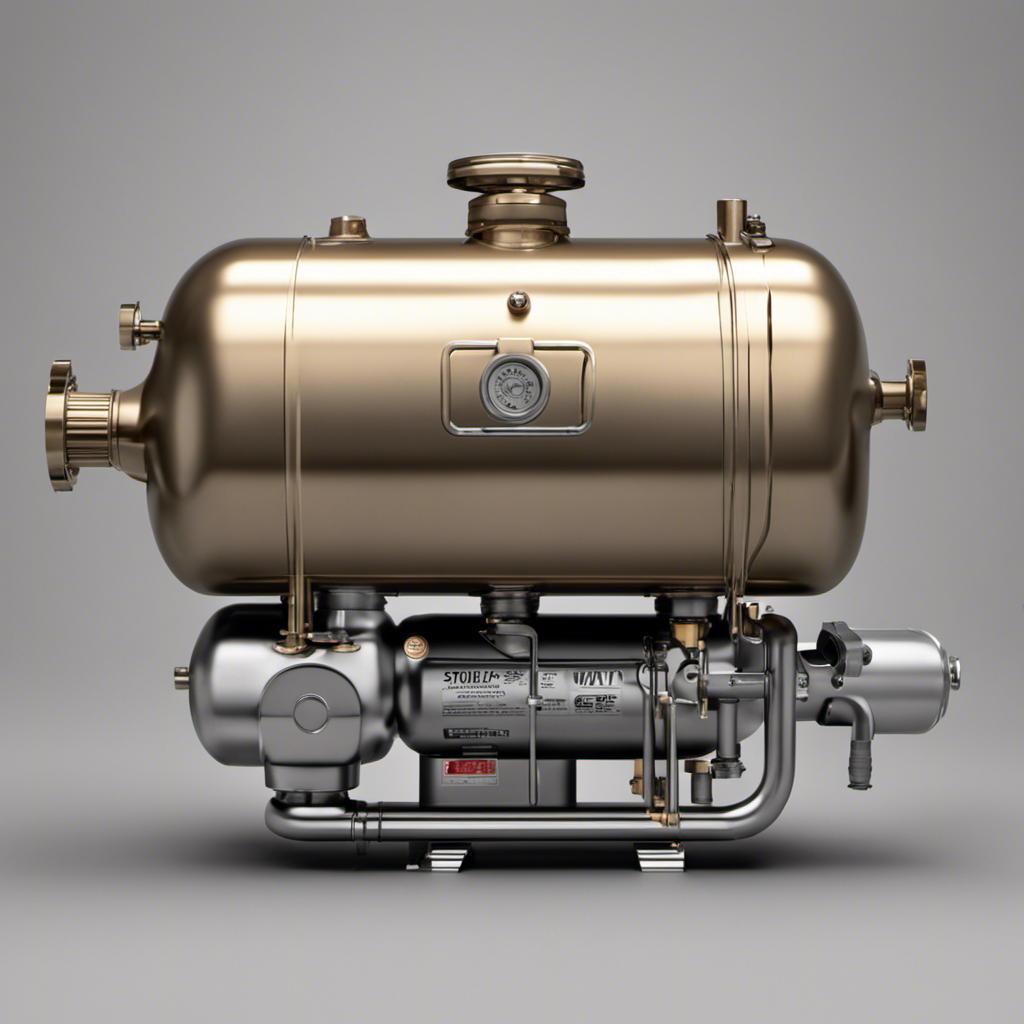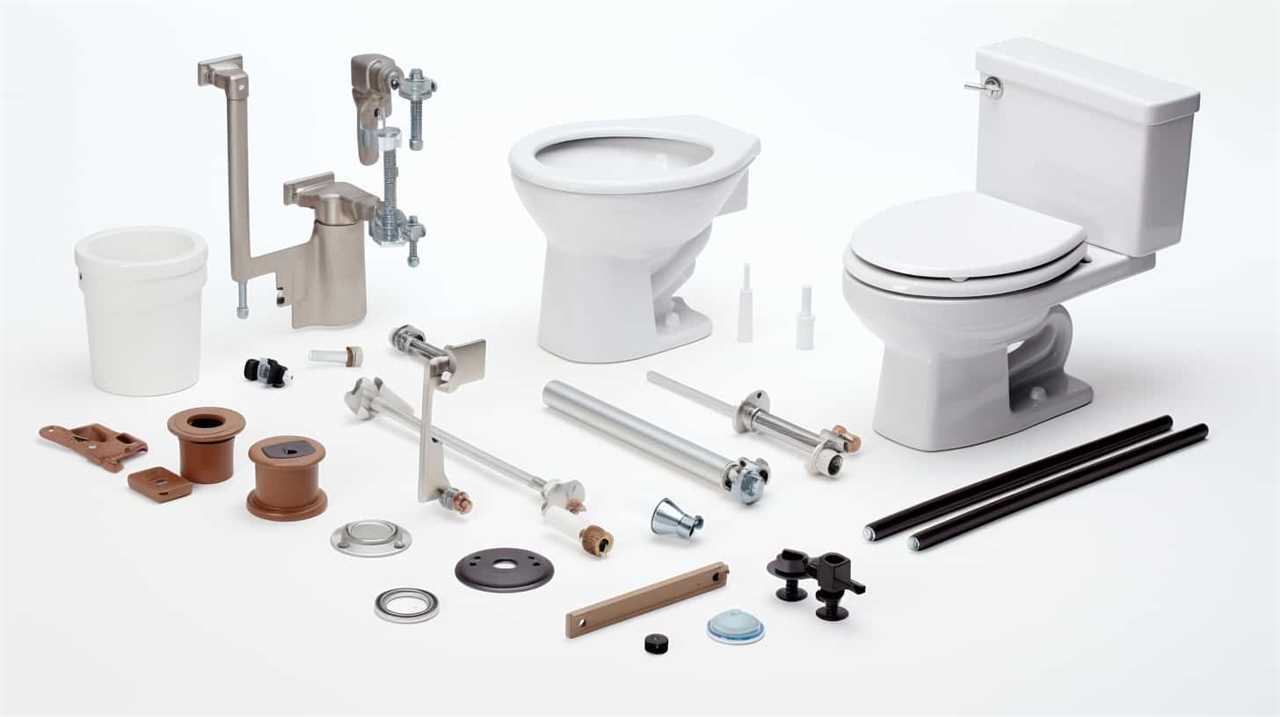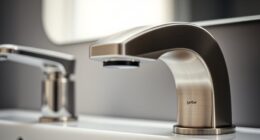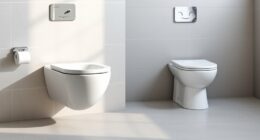Have you ever pondered whether a toilet can continue to flush if the water supply is cut off?
Well, let us delve into the depths of this mystery and shed some light on the subject.
In this article, we will explore the intricate workings of toilet flushing mechanisms, debunking any myths along the way.
So, buckle up and prepare to unlock the secrets of toilet flushing without water.

Key Takeaways
- Water is crucial for toilet flushing and plays a vital role in waste removal and hygiene maintenance.
- Dual-flush systems and high-efficiency toilets are effective in reducing water consumption while ensuring efficient flushing.
- Understanding the components of the flushing mechanism, such as the flush valve, fill valve, and siphon jet, is essential for mastering toilet mechanics.
- Alternative flushing methods, such as manually using a bucket of water or installing a gravity-based flushing system, can conserve water and provide practical solutions during water shortages.
The Importance of Water in Toilet Flushing
We frequently rely on water to effectively flush toilets. Water conservation and toilet flushing efficiency are crucial considerations when it comes to sustainable bathroom practices. With the increasing impact of water scarcity on toilet flushing systems, it becomes imperative to understand how we can optimize water usage without compromising flushing performance.
Efficient toilet designs, such as dual-flush systems that offer different water volumes for liquid and solid waste, can significantly reduce water consumption. Additionally, advancements in technology have led to the development of high-efficiency toilets that use less water per flush while maintaining effective waste removal.
Understanding the Flushing Mechanism
To understand the flushing mechanism, let’s delve into the components that work together to efficiently remove waste from a toilet bowl. The flushing mechanism relies on a combination of key components, including:
- Flush valve: This is a rubber seal at the bottom of the toilet tank that opens when the flush lever is activated, allowing water to flow into the toilet bowl.
- Fill valve: This component controls the toilet water supply and ensures that the tank is refilled after each flush.
- Siphon jet: This is a small hole located near the bottom of the toilet bowl that directs the water flow to create a siphon effect, effectively removing waste from the bowl.
These flushing mechanism components work in harmony to create a powerful flush that efficiently removes waste. Understanding how these components function is essential for anyone seeking mastery over toilet mechanics.

Exploring Alternative Flushing Methods
Continuing from our previous discussion on the flushing mechanism, let’s now explore alternative methods of flushing a toilet when the water is turned off.
In our quest for water conservation solutions, DIY toilet flushing systems offer a viable option. One such system involves using a bucket of water to manually flush the toilet. To do this, simply pour the water directly into the bowl until it reaches the desired level, then activate the flush lever.
Another option is to create a gravity-based flushing system by installing a small tank above the toilet. This tank can be filled manually with water, and when the lever is pressed, the water is released, creating a flushing action.
These alternative methods not only conserve water but also provide a practical solution when facing water shortages or when water supply is temporarily unavailable.

Can a Toilet Flush Without Water
When water is turned off, a toilet can’t flush without the presence of water. Flushing a toilet requires water to create a siphoning effect, which clears waste from the bowl. Without water, this mechanism can’t function properly, rendering the toilet unable to flush.
However, in situations where water scarcity is a concern, there are alternative flushing methods that can be used:
- Gravity-assisted flushing: Some toilets are designed with a gravity-assisted mechanism that allows waste to be flushed using less water. These toilets use the force of gravity to remove waste from the bowl, reducing the reliance on water for flushing.
- Vacuum-assisted flushing: Vacuum-assisted toilets use suction to remove waste from the bowl. This technology allows for efficient flushing with less water, making it a viable option in areas experiencing water scarcity.
- Dual-flush toilets: These toilets have two flush options – one for liquid waste and another for solid waste. By providing different water volumes for different types of waste, dual-flush toilets help conserve water while still ensuring effective flushing.
Exploring these alternative flushing methods can mitigate the impact of water scarcity on toilets, promoting sustainable water usage without compromising hygiene and sanitation.
Debunking the Myth: The Truth Revealed
As we delve deeper into the topic of water scarcity and toilet flushing, it’s important to debunk the myth surrounding the ability of a toilet to flush without water.
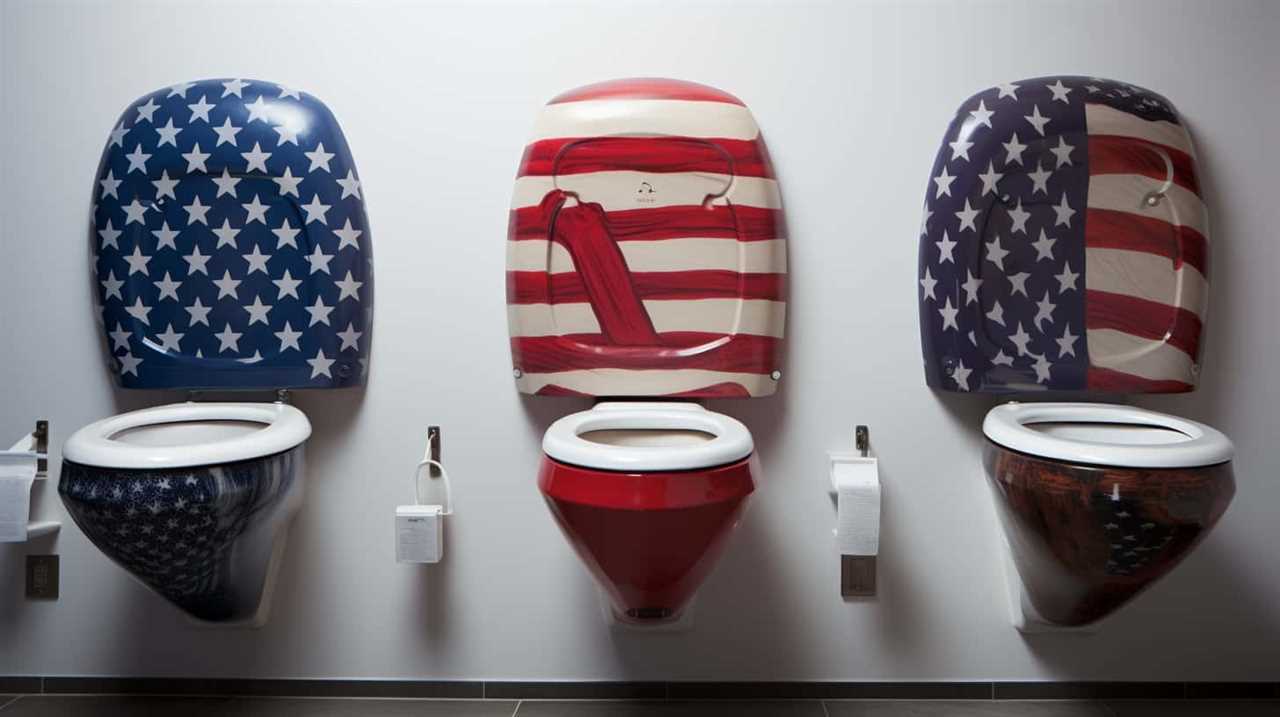
There are many misconceptions and common toilet myths that have circulated regarding this issue. However, the truth is that a toilet can’t flush without water.
The flushing mechanism of a toilet relies on the force of water to effectively remove waste from the bowl and carry it through the pipes. Without water, there’s simply no way for the waste to be flushed away.
Frequently Asked Questions
How Does the Water Supply Affect the Flushing Mechanism of a Toilet?
Toilet flushing mechanisms rely on a steady water supply to create the necessary pressure for an effective flush. Without water, the flushing mechanism will not work properly and the toilet will not flush.
Are There Any Environmentally Friendly Alternatives to Using Water for Toilet Flushing?
There are environmentally friendly alternatives to using water for toilet flushing, such as waterless toilets and composting toilets. These systems eliminate the need for water by using innovative technologies to process waste effectively and efficiently.
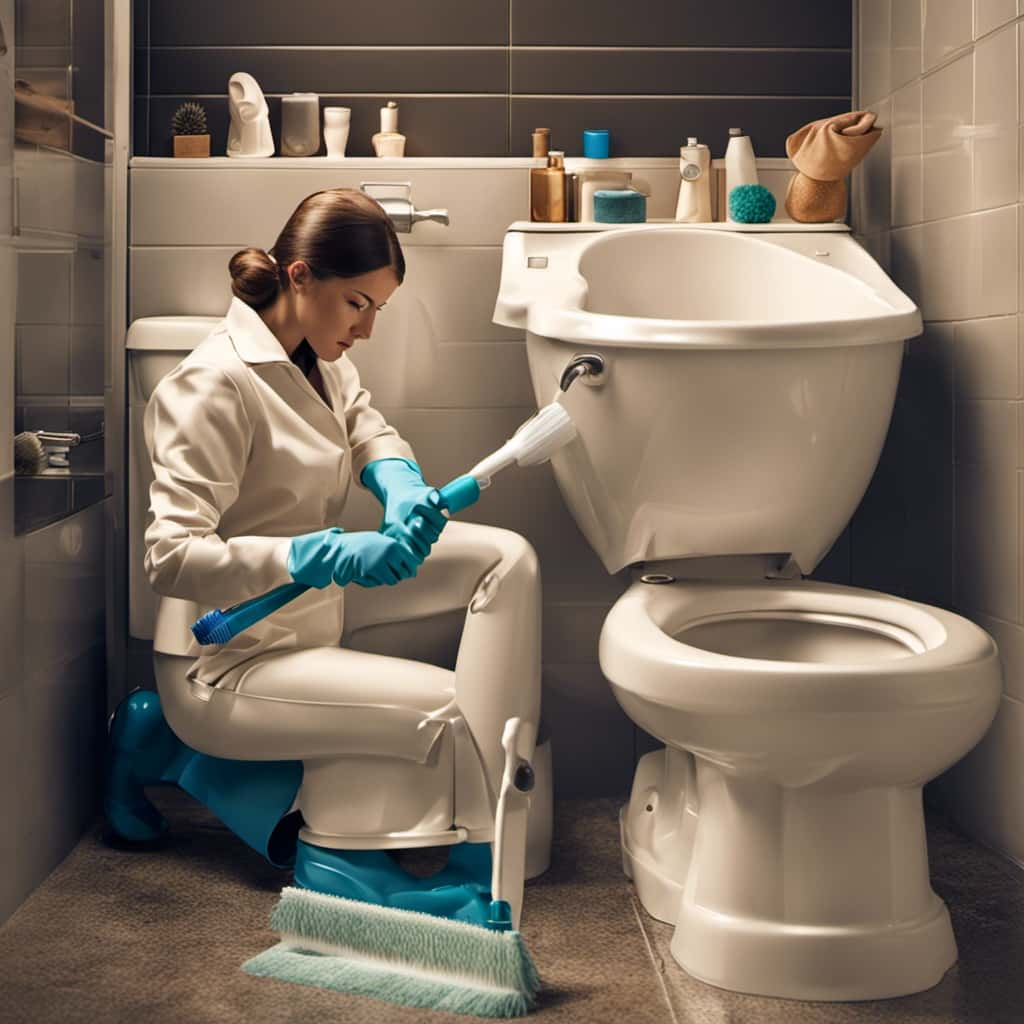
Can a Toilet Be Designed to Flush Without Any Water at All?
Toilet flushing alternatives include waterless toilet technology, which eliminates the need for water in the flushing process. By employing innovative designs and mechanisms, these toilets can effectively flush without any water at all.
What Are Some Common Misconceptions About Toilets Flushing Without Water?
Misconceptions about toilets flushing without water include the belief that they are ineffective. However, this is not true. Such toilets can be designed to effectively flush waste using alternative methods, ensuring proper sanitation.
What Are the Potential Consequences of Flushing a Toilet Without Water?
Flushing a toilet without water can have potential hazards and cause plumbing damage. It is important to understand the consequences, such as clogging, sewer line backup, and damage to the toilet’s components.
Conclusion
In conclusion, a toilet cannot flush without water. The flushing mechanism relies on the force of water to effectively remove waste from the bowl. Alternative flushing methods may be explored, but none can replicate the efficiency and effectiveness of water.
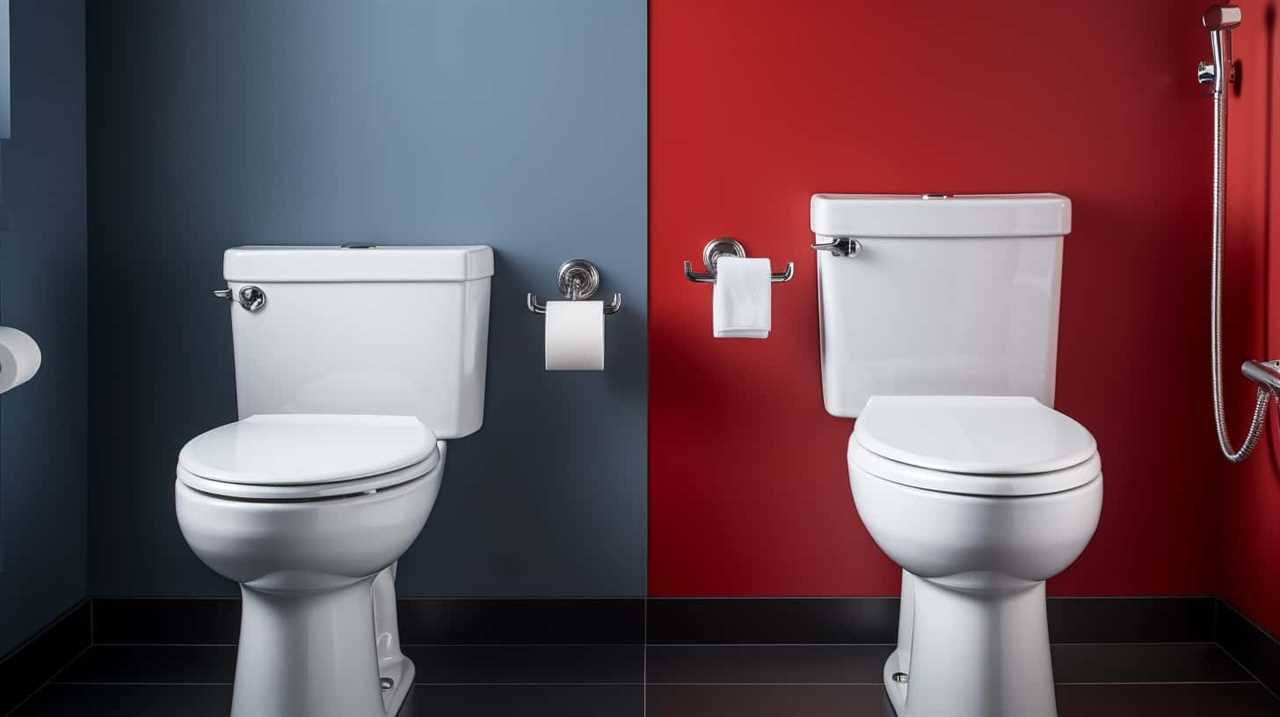
So, next time you turn off the water supply to your toilet, remember that without water, flushing becomes an impossible task.
